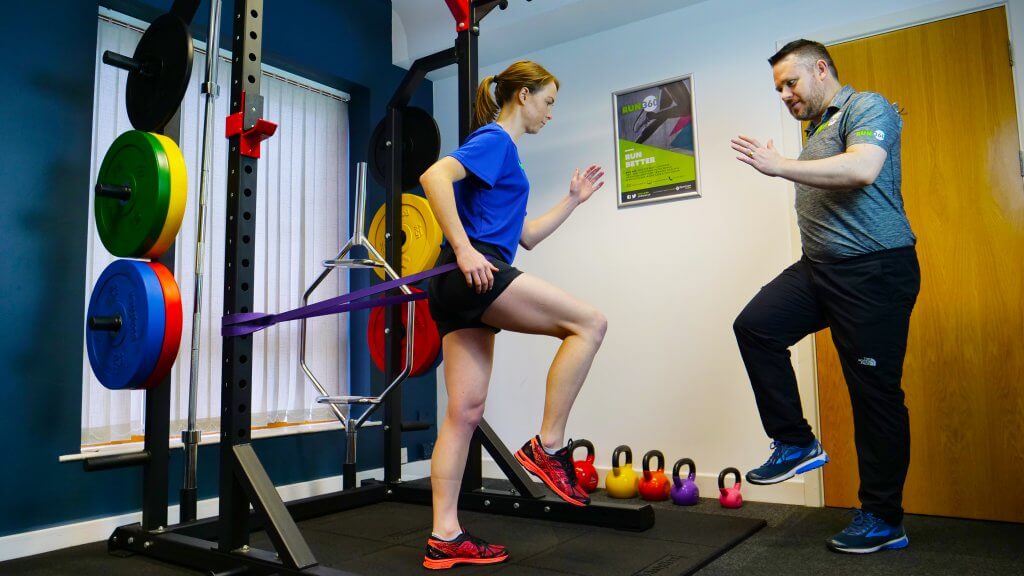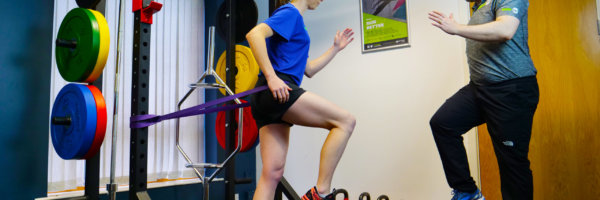Runners are prone to injury. And it is a royal pain in the backside when it happens. We team up with the experts at Run 360 to look at the different ways that you can prevent injury while running.
Brought to you by:

Injuries are the bane of any active person’s existence. For runners, the stats would suggest between 50 and 75% of the running population will have an injury in any given year and as many as 40% at any one time! That’s right up there with most contact sports.
WIN! An Injury Prevention Marathon Bundle with Run360 worth more than €800
Walking and running are core movement strategies for most people, and we did a lot more back in the day when we were hunter-gatherers and it was a survival of the fittest. Those days are long gone now and some of us are still blessed with magic running genes but, for the majority of people, we need a little helping hand to keep our bodies on track.

Warwick Gordon, a Clinical Specialist in Musculoskeletal Physiotherapy, looks at five ways you can avoid injury from running.
1. Self-care
Foam rolling, self-massage, call it what you want it, but it generally falls into the “necessary evil” category. Trying to maintain optimal muscle quality is key in helping avoid injury. As the adage goes, prevention is better than the cure and, in this case, it is carried out primarily through optimising training loads, making sure you have the right footwear and reviewing your biomechanics for any sneaky icebergs up ahead.
However, the whole point of training is to create muscle adaptations – bigger, stronger, faster, longer! I’m yet to meet an athlete who adapts perfectly to every training block or stimulus, or one who wants to wait until the muscles have naturally relaxed prior to the next session.
What are the keys to effective soft tissue release sessions? Pick your weapon: foam roller, spikey ball, tennis ball, or your own hands. The options are numerous and they all have their pros and cons. If I had to pick one critical point, though, it would to be aware of which way the muscle fibres are orientated and which way you are rolling over them.
Don’t know which way the fibres are orientated? Run your hand up and down and then side to side and you will get a feel for it as the tissue will “pop” under your hands. If not, then a quick search for “skeletal muscles” on the internet will bring you countless images, and you will easily be able to see the orientation of them in each region – you then simply go at a right-angle to this.
You need to cover both directions; I find up and down easier with a foam roller on the leg and the sideways motions for me are easier with my hands.
2. Cross training
We all love to get out running or walking, but when or why should I use cross-training? Walking and running both have a large amount of ground reaction force. This is fine, you can train to optimise how you deal with this force. However, if you are pushing the limits of your body to get maximum change while building up to a new race or event, for example, sometimes these forces and the rate of adaptation are simply too great to overcome.
Cross-training is a fantastic way of giving the primary muscles and joints that you use for your running and walking a rest, while still being able to maintain a training effect on your heart – your supply chain. If you don’t keep tabs on the supply chain it will quickly reverse and you will see all your hard-earned cardio conditioning disappear, and this can happen in a shorter time than it takes your tissues to recover.
Think of cross-training as a form of active recovery if you like; you still get the cardiovascular benefit without the impact forces. Everything from swimming, cycling, rowing and elliptical trainers are all perfect alternatives. I suggest at least one of your sessions each week contains some form of cross-training, and then multiple sessions at the end of each training block on your down weeks.
3. Nutrition
Discussing this is like opening Pandora’s Box. Everyone has an opinion and there are so many different valid approaches. So as much as I’m not a dietitian, here are my brief two cents when it comes to running. It is a simple equation – calories in VS calories out. If you are at/close to your target weight then you might look to try and match your daily calories to your workout load. So on a day with a heavy session increase your calories, on a rest day you should reduce calories to match.
A recovery week usually comes after a very intense few weeks. You should consume enough calories for appropriate repair, but don’t just keep on eating the same amount as those last couple of weeks; otherwise you’ll get to the other end of your rest week with an unwanted extra pound or two.
Like your running mileage, you should have a diary to track your food as well. My Fitness Pal is a great app for this. If you are looking to optimise performance this is a must because it will allow you to reflect on any injuries, levels of performance and adjust accordingly for the next training block.
4. Sleep
Depending on the studies you read 7+ hours a night seems to be the tipping point at which positive or negative things happen. You need sleep for both physical and mental repair, and if you are looking to lose or maintain weight this is critical. It doesn’t matter what injury my patients come through the door with, I want to know how they are sleeping, the number of hours and the positions that they prefer.
Sleep trackers have made this a lot easier to manage. One of the common traps I see people fall into is counting your sleep from when you go to bed versus when you actually fall asleep. It is very easy to move from thinking you are getting 7 hours and 15 minutes when in actual fact it was 6 hours and 45 minutes. Small margins, I know, but if you do it frequently enough it will have an accumulated response. Also, keep this in mind if you have young children and sleep is a luxury – modify your expectations for training around this.
5. Run360
Run360 is an Irish company specialising in 3D gait analysis for walkers and runners. Simply put, we can give you the objective data you need to allow you to move injury free, optimise performance, and most importantly, keep you doing the activities you love.
Why should I do this? This is the only way you can analyse your hip, knee, ankle and foot working as a team at the same time. The human eyes are simply unable to pick up all this detail and analyse it objectively. Our Run3D system will capture your movements on camera, measuring them against an injury-free database to alert us to anything that you may be doing that might be a red flag down the road.
We don’t endorse a specific style of running as such, but we can use the details and data produced here against your own medical history to decide if it is clinically relevant, or just how your body is designed. From here, we can create a highly specific conditioning programme for you to optimise your performance and avoid any future injuries.
Check out the Run 360 Website for further details.
Warwick Gordon is a Clinical Specialist in Musculoskeletal Physiotherapy. To keep fit he usually mixes it up between running (his first love) and lifting, and he currently works with the Irish Powerlifting team. This year he is dialling back the weights and ramping up the cardio work with the aim of completing the SSE Airtricity Dublin Marathon later this year. Outsider readers can avail of a 10% discount at Run 360 by using the discount code: OUTSIDER360.
WIN! An Injury Prevention Marathon Bundle from Run360 Worth Over €800
Check out our Hard as Nails podcast:
Like this? You should check these out:











